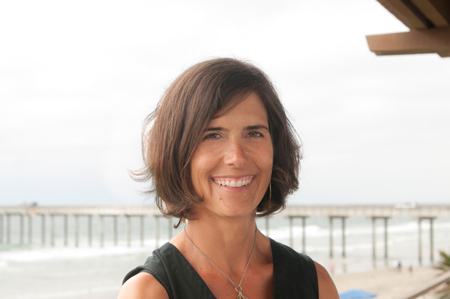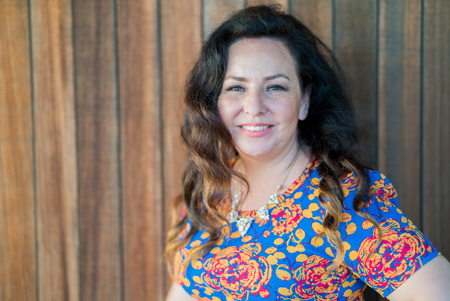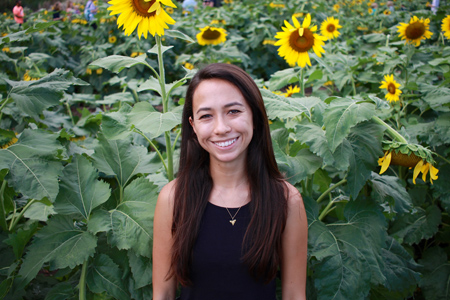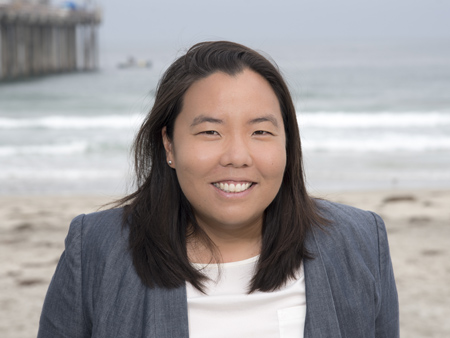Each year, the Society for Advancement of Chicanos/Hispanics and Native Americans in Science (SACNAS) holds a conference dedicated to bringing together students and scientists from diverse backgrounds in order to encourage collaboration and support for one another’s educational pursuits, careers, and personal ambitions.
Since 2002, the University of California San Diego’s Graduate Division has established a place for themselves at SACNAS and will be participating in the 2019 conference taking place Oct. 31 – Nov. 2 in Honolulu, Hawai’i.
Several UC San Diego departments including Scripps Institution of Oceanography, Biological Sciences, Health Sciences and Engineering, and Physical Sciences have participated in outreach and recruitment efforts at SACNAS over the years. The conference, which UC San Diego has sponsored since 2015, provides an opportunity for the university to recruit highly-qualified students from diverse communities.
Students attending SACNAS are encouraged to visit UC San Diego at booths #1501, 1503, 1600, and 1602, where Scripps Oceanography students, faculty, and staff will answer questions about science and education, exchange stories of their experiences in research, and talk about the exciting work that is ongoing at Scripps.
We spoke with several remarkable students and faculty to learn why attending SACNAS made an impact in their lives, what propelled them forward in their field of study, and more.

Jane Teranes | Teaching Professor
What is your role at Scripps?
As a teaching faculty at Scripps, I am very involved in our undergraduate education programs. An important theme in all of my work is to provide research and internship opportunities for undergraduates. These hands-on experiences develop scientific curiosity and connect students to majors, research applications, and career paths in earth, ocean, atmospheric and climate sciences.
Why is attending SACNAS important to you?
I attend SACNAS meetings, and I encourage undergraduate students that I work with to attend SACNAS because it provides such an amazing and supportive environment for students. It’s also a great place for me to connect with prospective students – including students that could apply for a summer research opportunity or even a PhD program at Scripps. The content and the format of the meeting fosters and celebrates the participation of minority populations in STEM and can help our fields more quickly reach our potential. What’s more, the meeting is really a lot of fun!
How can people connect with you at SACNAS?
You will find me at the Scripps booth, mentoring undergraduates in the new Geo-Futures program, and judging student posters. Please ask me about summer undergraduate research opportunities at Scripps!

Deborah Gardner | PhD Student
What are you researching at Scripps?
I'm working on something I can't believe hasn't been done yet: the global ocean momentum budget. I'm using the output from the Estimating the Circulation & Climate of the Ocean (ECCO) state estimate and will compare that to in situ and satellite observations once the budget has been closed (balanced within error bounds). I am working with Matt Mazloff, author of the Southern Ocean State Estimate (SOSE), and recently learned that my academic lineage includes Carl Wunsch, ECCO coauthor, and Henry Stommel, famed geophysical dynamicist! I am humbled to be following the footsteps of such influential scientists.
Why is attending SACNAS important to you?
It is an understatement to say that I have a unique background, and nearly impossible for me to find scientists that can identify and/or empathize with life as a parent-graduate student, post-military life, or issues with aging working-class parents. In fact, I'm more likely to find comparable strife in the list of legacy professors than with my grad-student colleagues. Not one of my colleagues comes from a working-class background and all have at least one parent with a college education. Only one of my four parents graduated from high school.
The SACNAS Diversity in STEM Conference is the one place I'm guaranteed to meet people that have lived with similar challenges entering academia. More than my life experiences, the conference also allows me to see successful scientists, educators, and communicators who share my culture. Representation matters! I grew up ignorant of research as a possible career track. I didn't even know it existed until I transferred to UC San Diego to finish my undergraduate degree!
The 2016 Diversity in STEM Conference in Long Beach was the first time I had met a Chicana professor, Erika Camacho, who happened to be a mother and sacrificed spending time with her son for the first two years of his life to finish her doctorate. Her talk is the one I return to in my mind when I contemplate whether I'm "good enough" to become a professor or not. The answer is yes. Yes, I am!
How can people connect with you at SACNAS?
I am on Twitter (@DebDoesScience), Instagram (@MOMinMomentum), and LinkedIn.

Anela Akiona | PhD Student
What are you researching at Scripps?
My research interests are in coral reef fish ecology, predator-prey interactions, and coral reef fisheries and management. As part of Stuart Sandin’s lab, I’m researching how coral reef fish communities are shaped by oceanographic and anthropogenic variables using the data generated from the 100 Island Challenge.
Why is attending SACNAS important to you?
As one of the few Native Hawaiian students at Scripps, I’m incredibly excited to connect with other local students. As an undergrad, I never had the opportunity to attend SACNAS, but I can’t help thinking how helpful it would have been. I had a lot of misconceptions about attending graduate school, especially regarding funding, so my goal at SACNAS is to show other students that their education doesn’t have to end after college if they don’t want it to.
How can people connect with you at SACNAS?
I’ll be at the Scripps Oceanography booth during the Graduate School & Career Expo sessions, but if anyone wants to meet up to discuss graduate school, the application process, etc., I can be reached on Twitter (@AnelaAkiona).

Ivan Moreno | PhD Student
What are you researching at Scripps?
I study the diversity of the eukaryotic and prokaryotic microbial life in the hot springs at Black Canyon along the Colorado River. These hot springs hold great potential for discovering novel thermophilic (heat loving) microbes. I am most interested in the genomics of these microbes and how they differ from the microbes seen at other well studied hot springs around the world. This work is all done in the lab of Brian Palenik.
Why is attending SACNAS important to you?
The first and only time I’ve attended SACNAS was in 2016 as an undergraduate, when it was held in my home town of Long Beach, Calif. Here I had the chance to meet with representatives from potential summer research programs and began to inform myself about the potential of going to graduate school and pursuing a higher education. In fact, it was where I first found out what Scripps Institution of Oceanography was and the research that was being conducted here! Being able to navigate such a large conference in a setting where I felt accepted helped me become proactive in terms of networking with both schools and other students.
Now that I get a chance to reconnect with the conference and with other graduate students, as well as reach out to undergraduate attendees, I look forward to adding to the inclusiveness of the meeting. I thoroughly enjoy speaking to prospective graduate students about handling graduate school as an underrepresented minority and first-generation student in STEM, and having the opportunity to do it at a large meeting such as SACNAS is always a pleasure.
How can people connect with you at SACNAS?
Aside from being at the UC San Diego booth while at the meeting, I try my best to be active on Twitter (@termofilos) and will be posting updates on that platform as frequently as possible. If anyone would like to hang out at SACNAS to talk about research, graduate school, or anything in between, reach out to me through my Twitter account! Otherwise, my email address is imoreno@ucsd.edu, where I’m more than happy to reply to any emails any time after the meeting.

Anela Choy | Assistant Professor
What are you researching at Scripps?
I’m a sea-going biological oceanographer and marine ecologist who studies the structure and function of open ocean and deep-sea food webs, which fill Earth's largest habitat and play critical roles in climate regulation and global seafood commerce. To conduct this research, my lab combines a number of tools and perspectives, including using remotely operated vehicles to observe feeding events in situ, analysis of stomach contents or diet, and measuring biochemical trophic tracers such as stable isotopes and trace metals.
Why is attending SACNAS important to you?
There are so many incredibly talented and brilliant native and indigenous scientists and scholars. Attempting to bring some of these individuals together to share and engage, and build community, in a place as special as Honolulu – I wouldn’t miss it!
How can people connect with you at SACNAS?
I look forward to attending talks, panels, poster sessions, and events and will be at the Scripps Oceanography booth. My Twitter handle is @anelachoy. I am excited to connect with new people!
– Arielle Amante